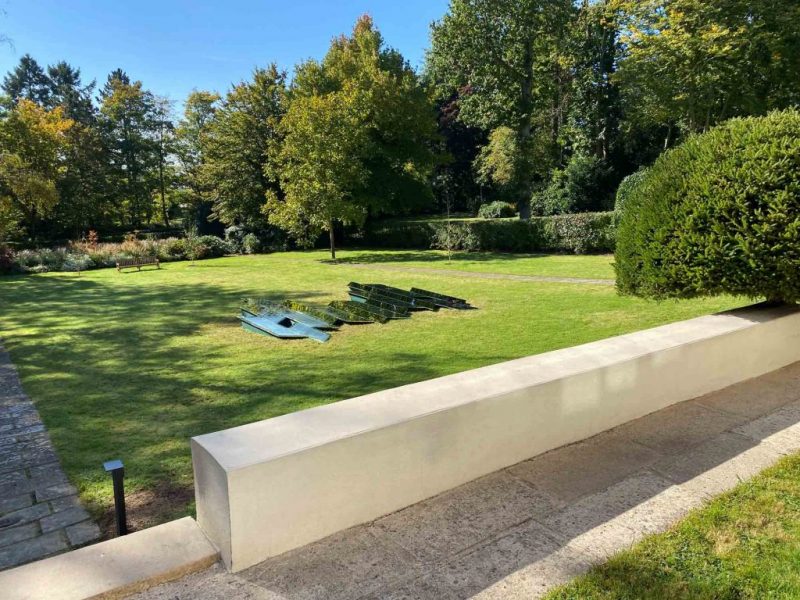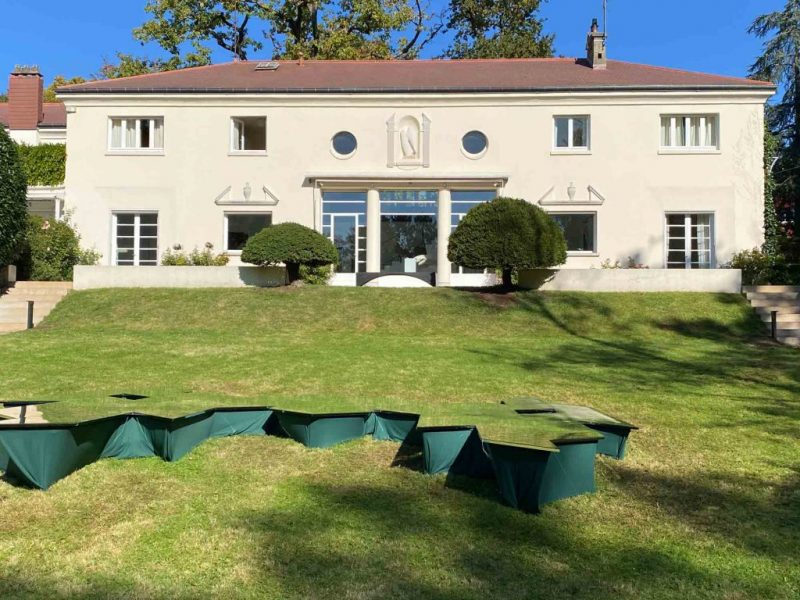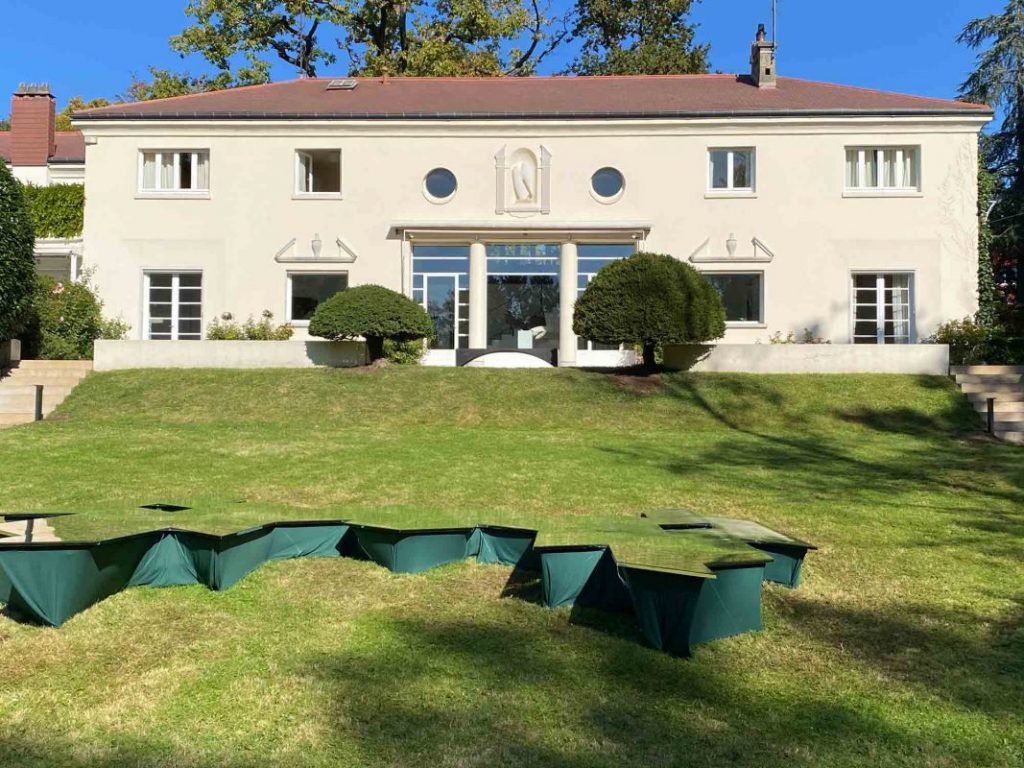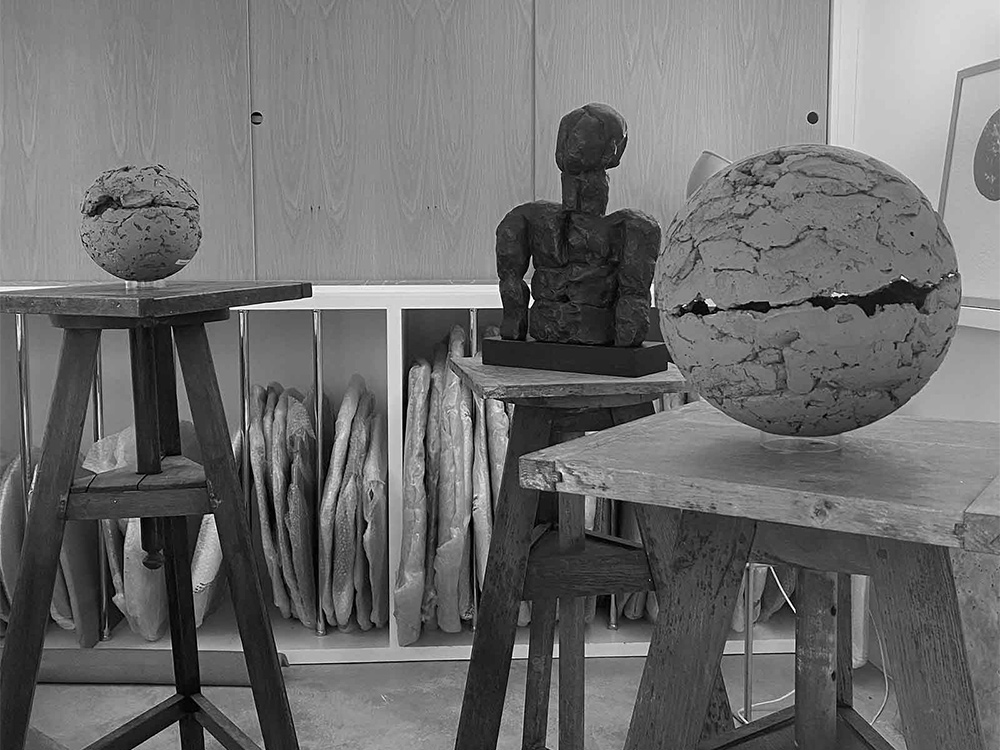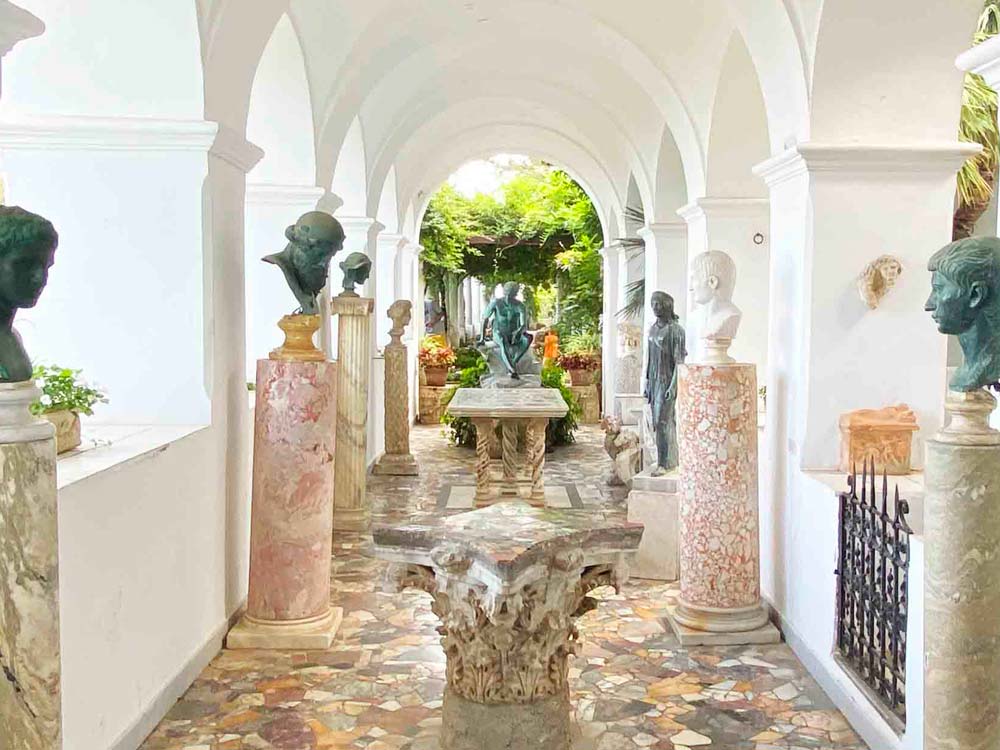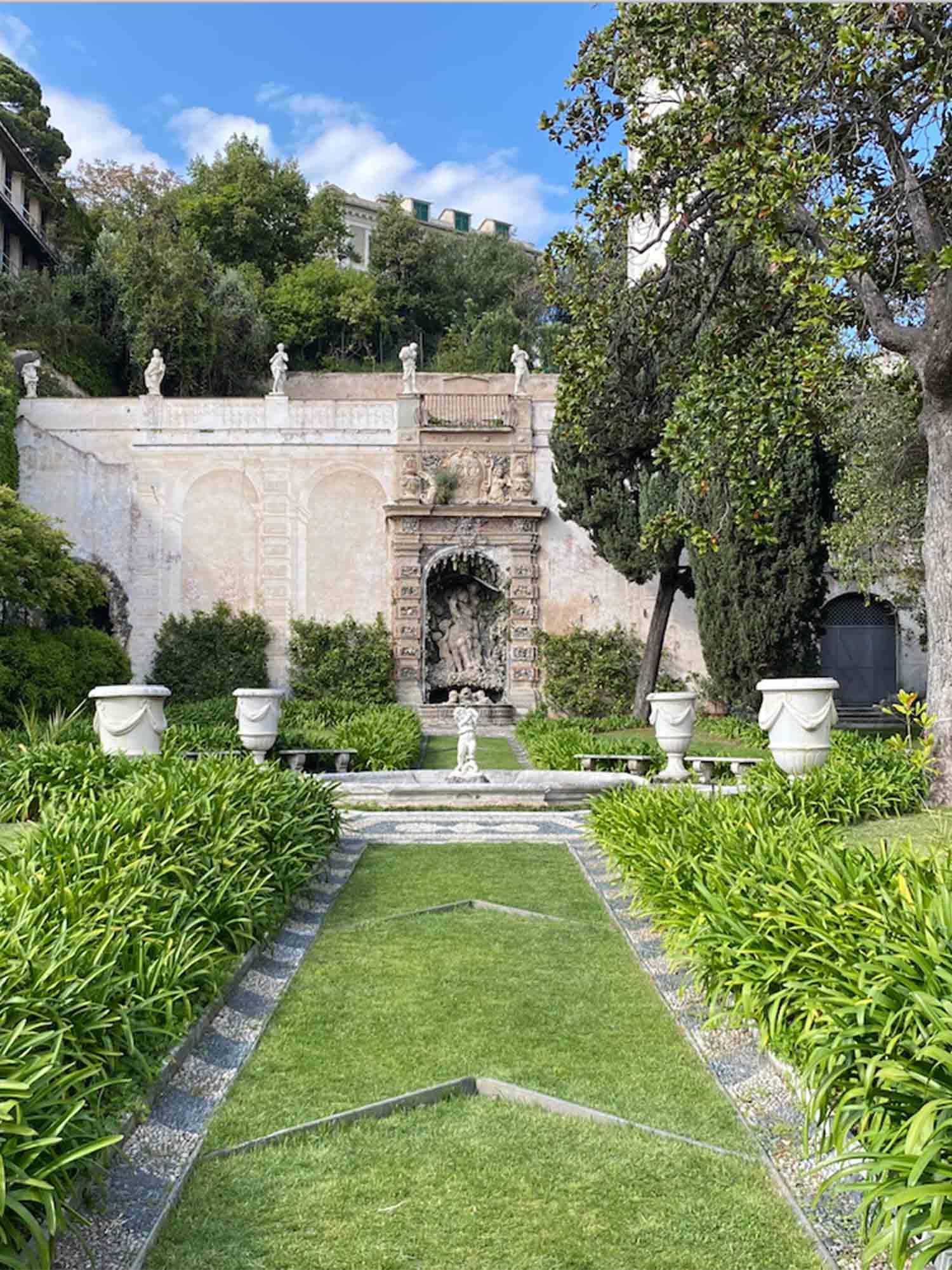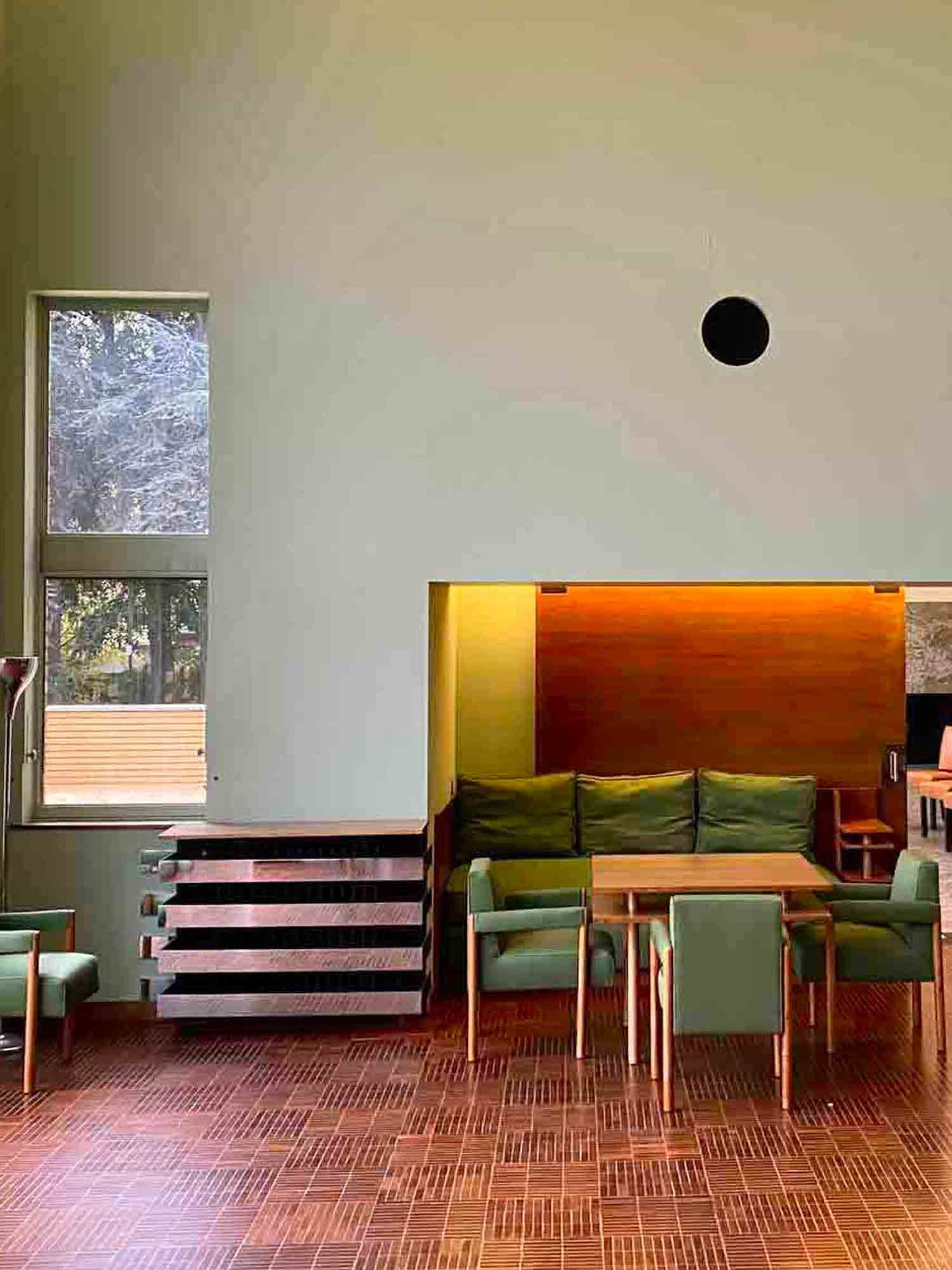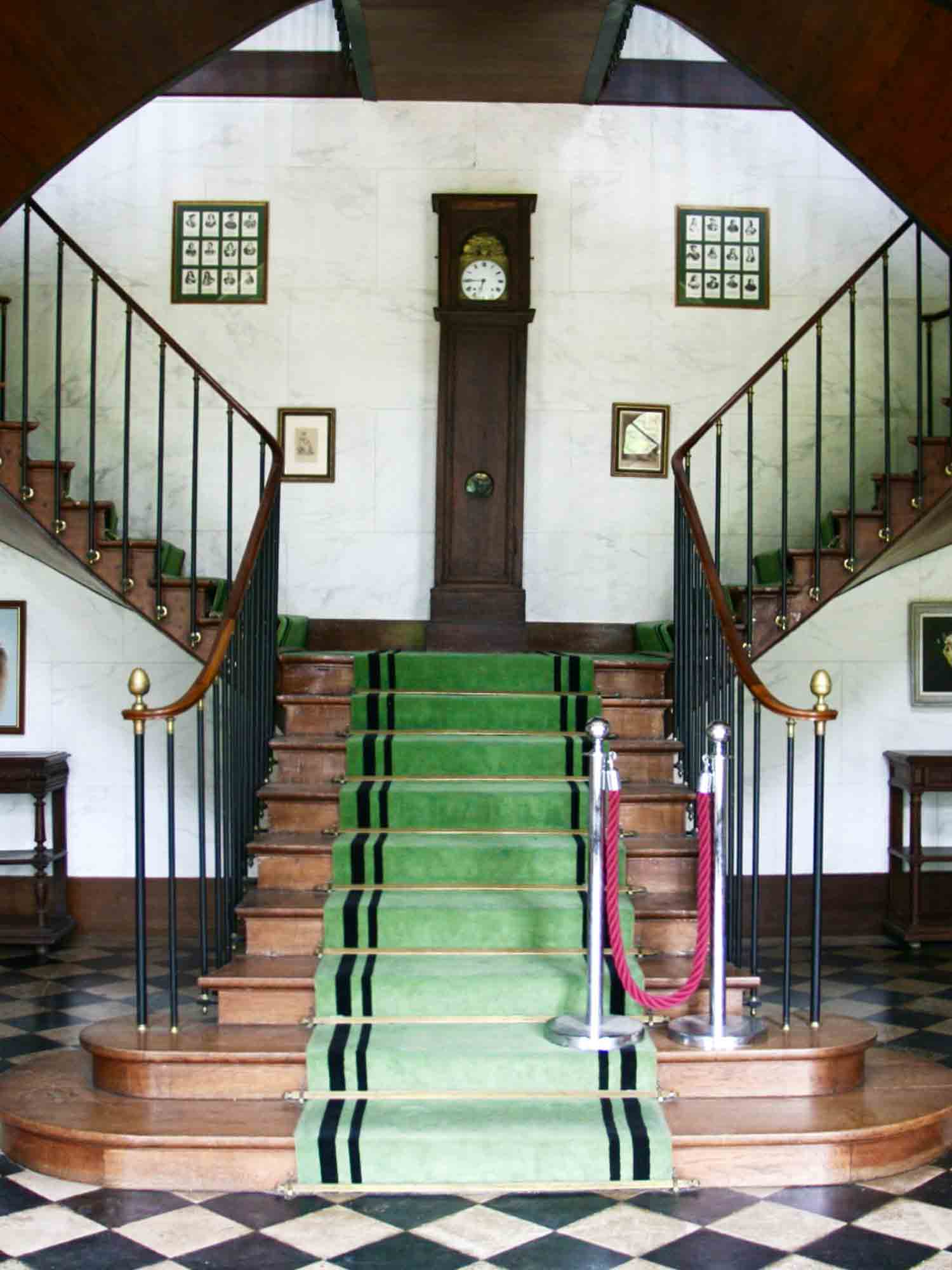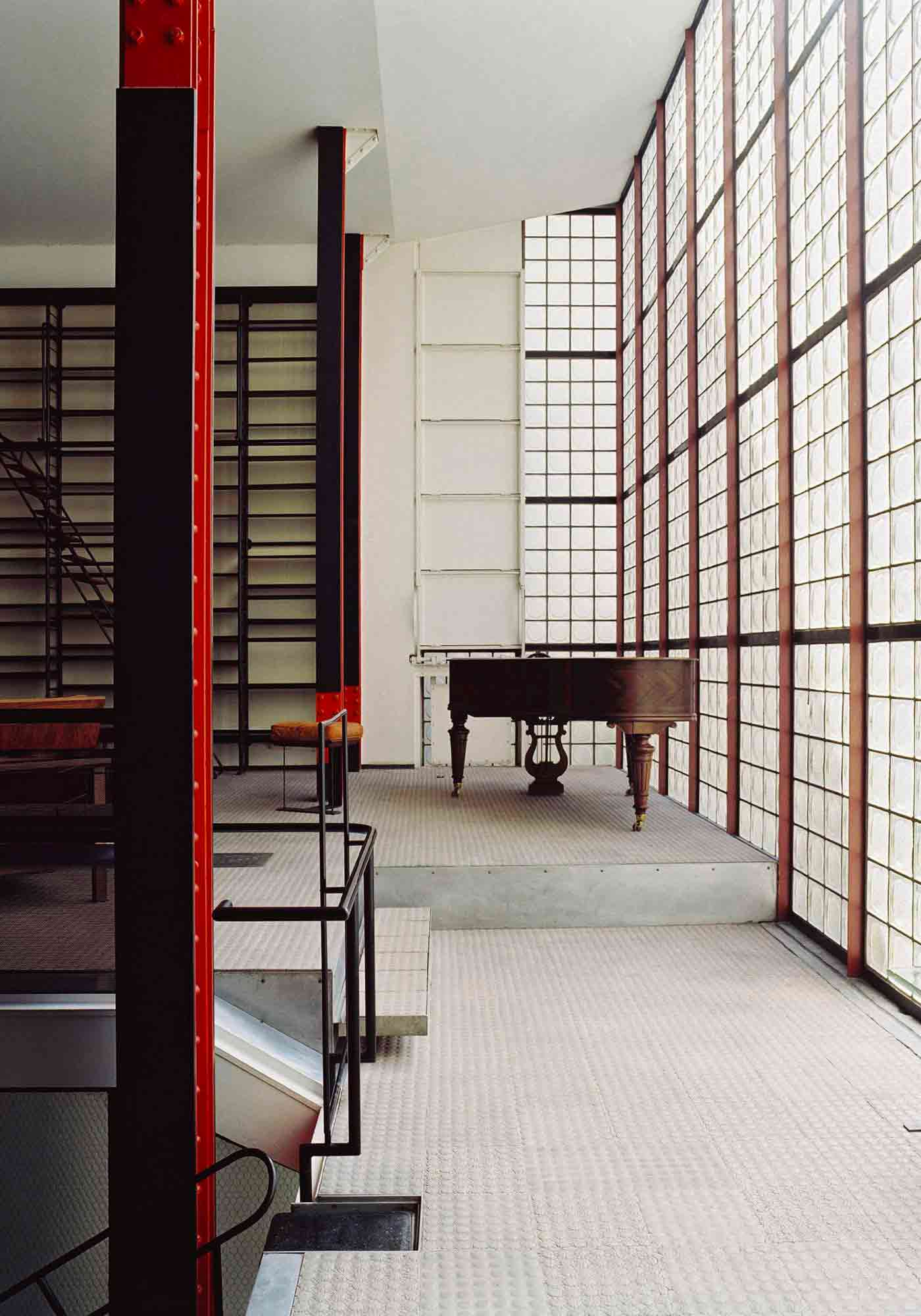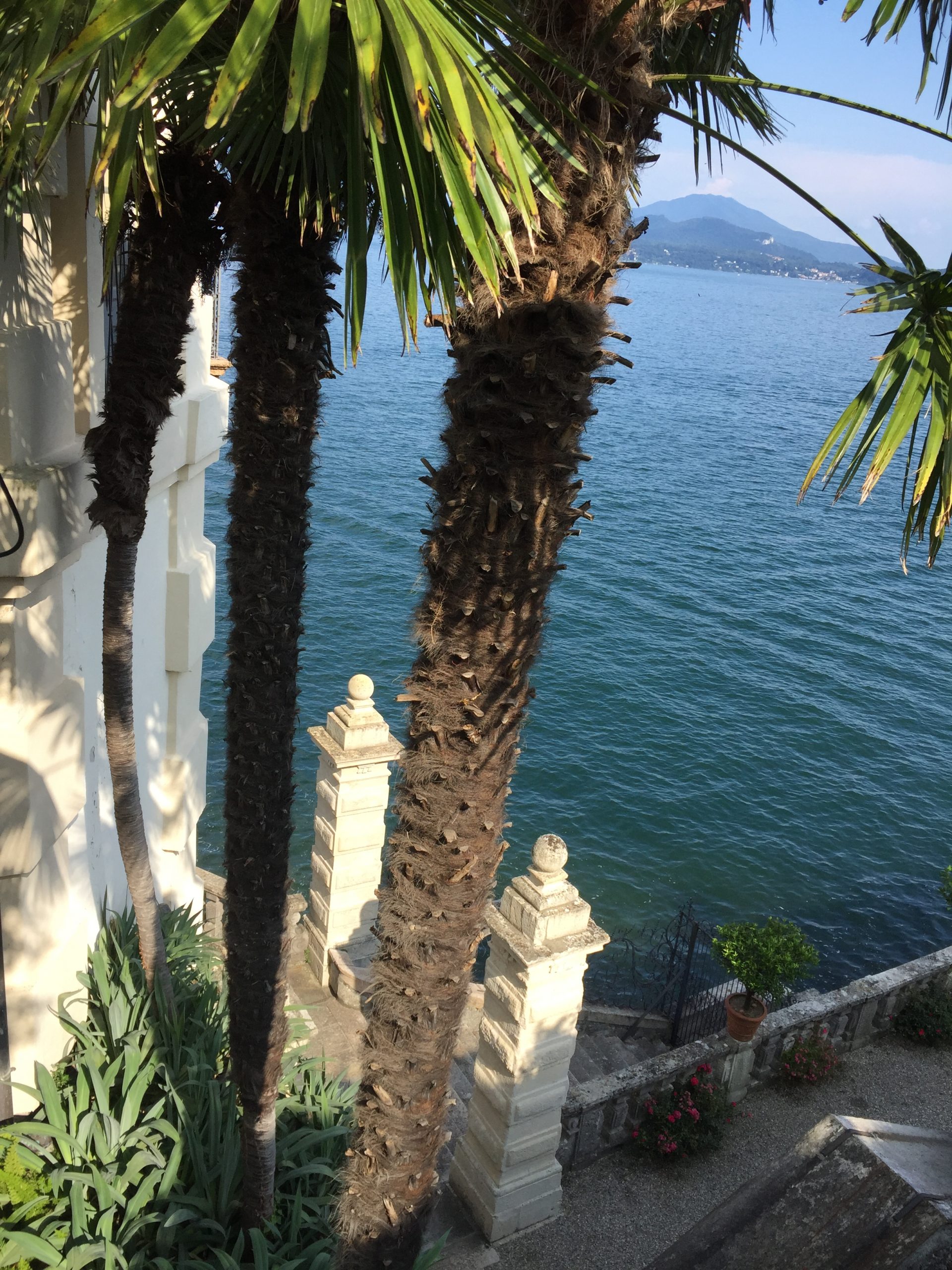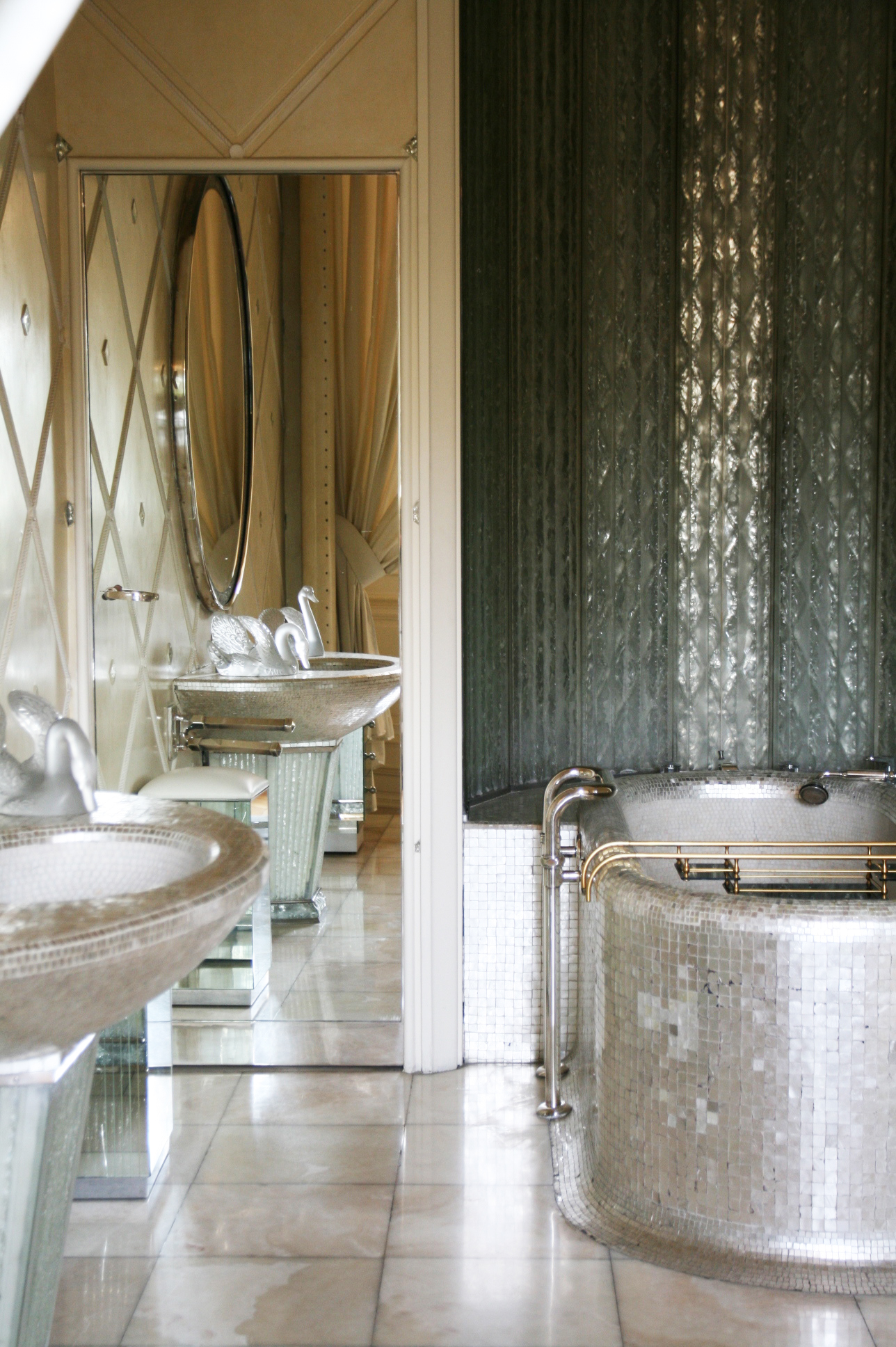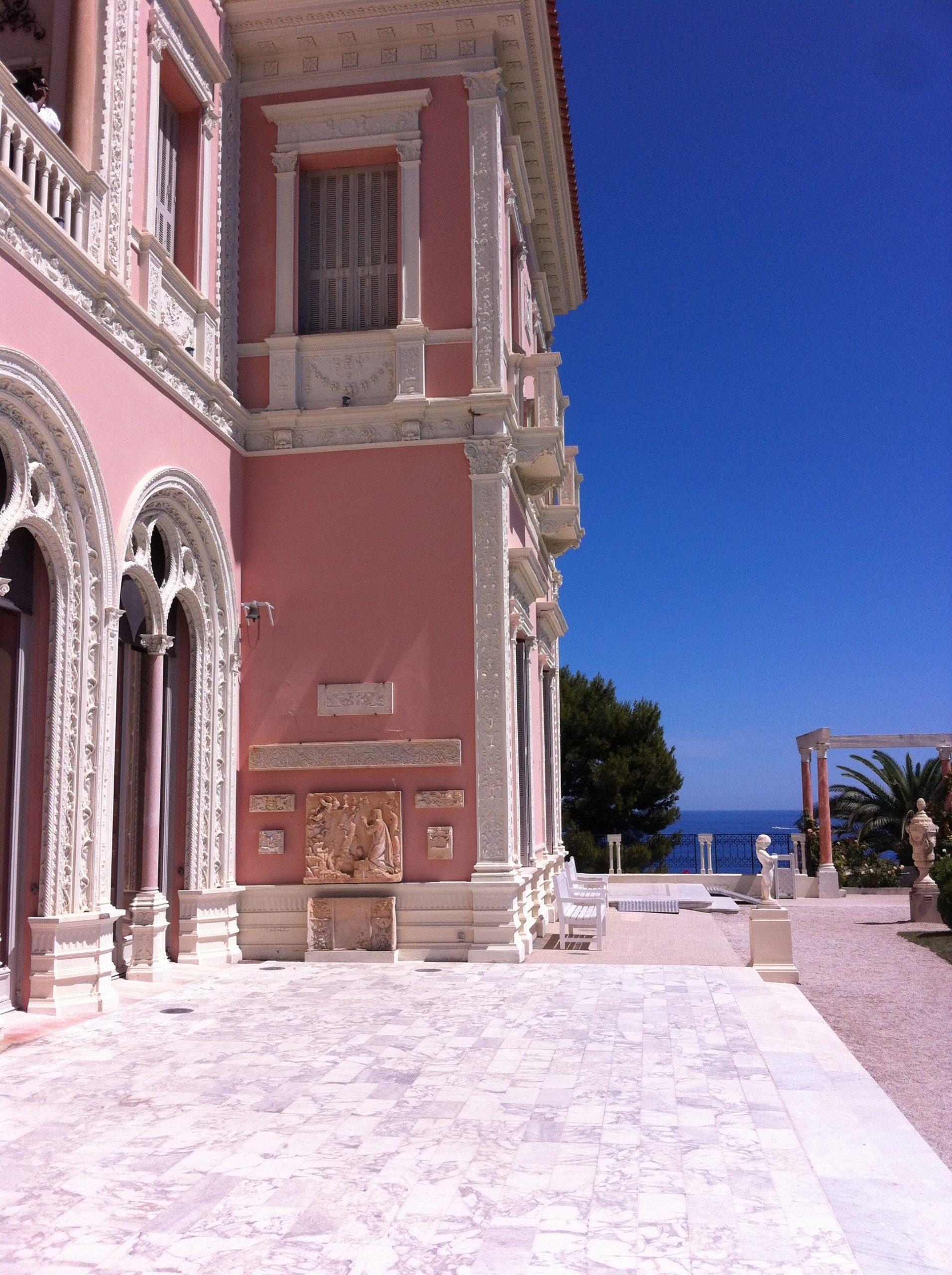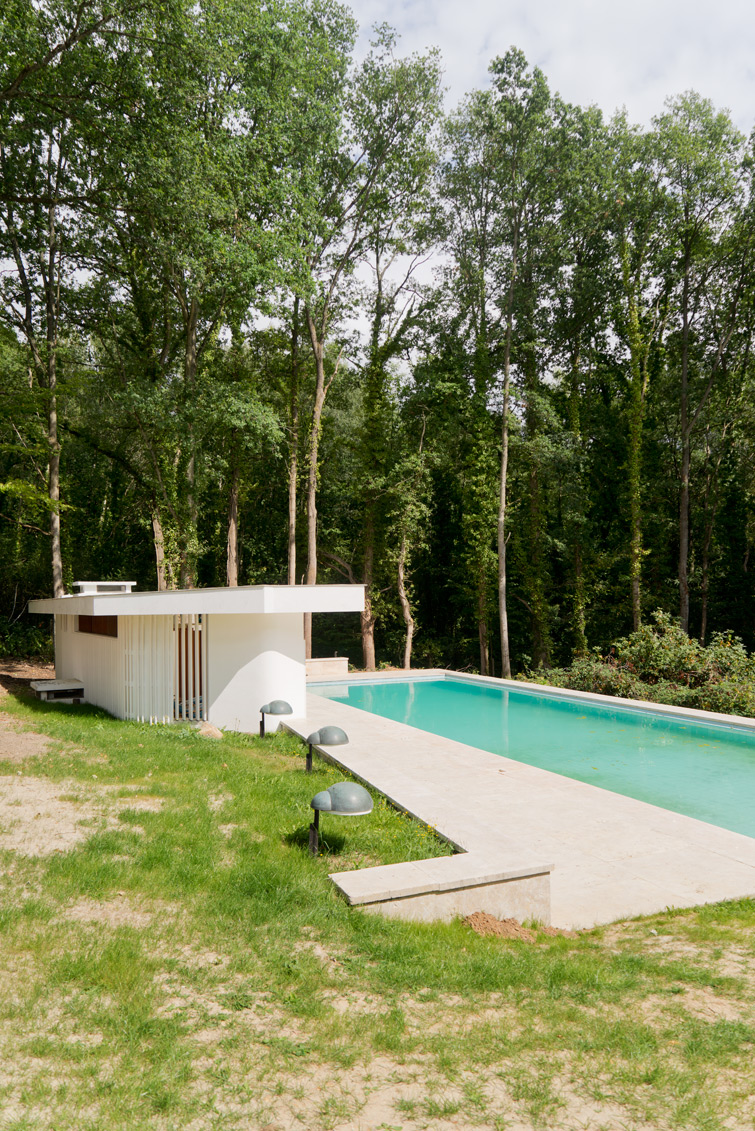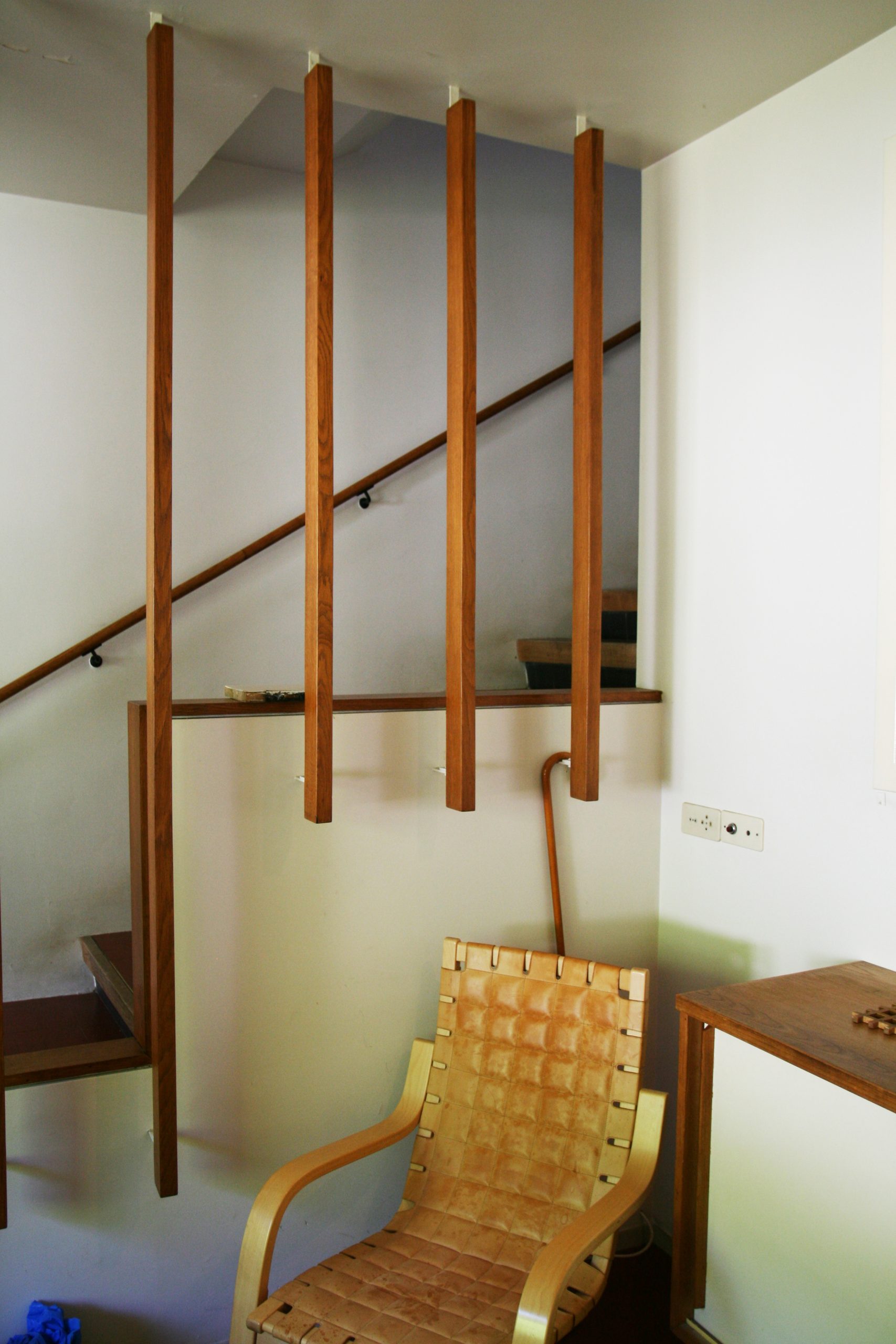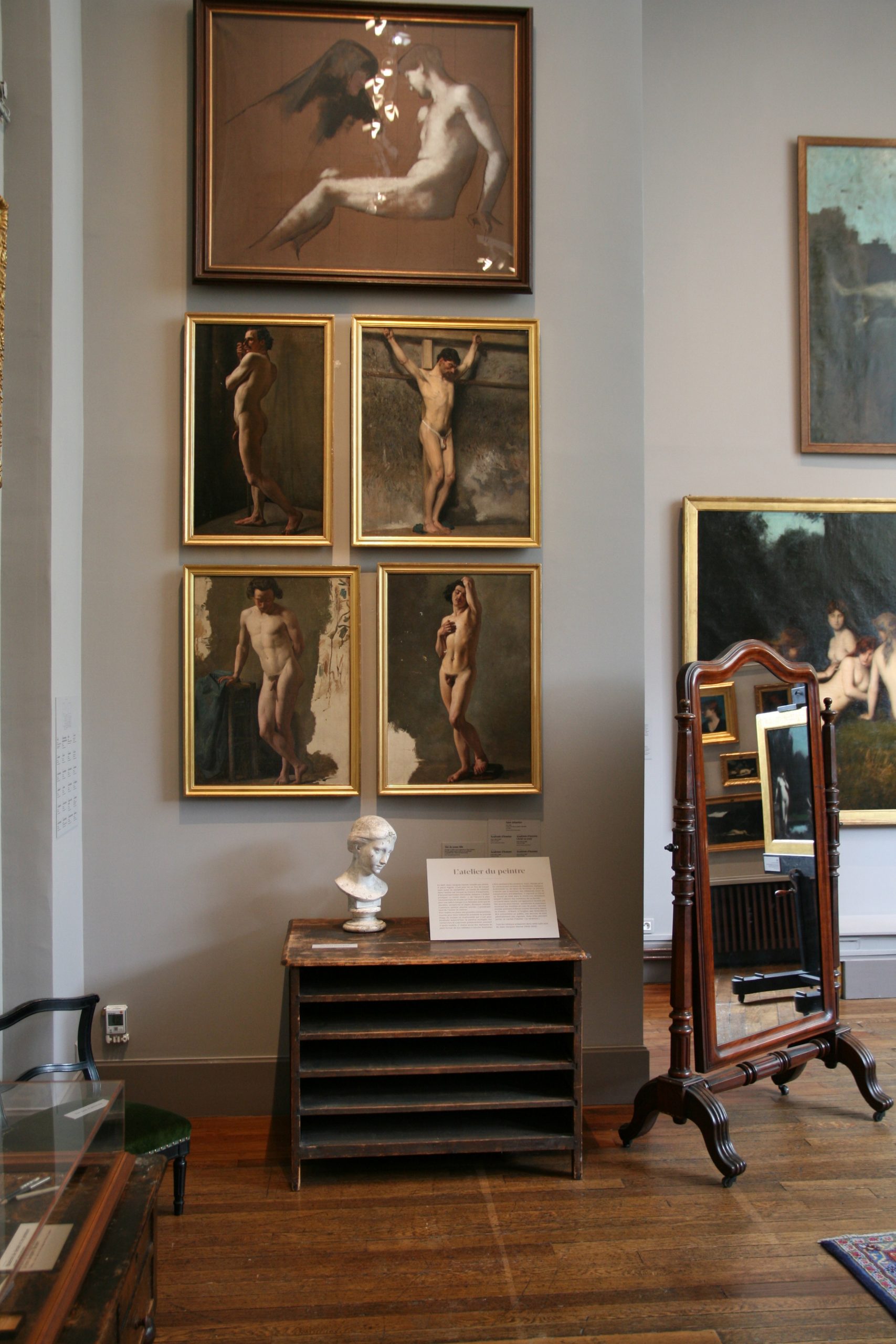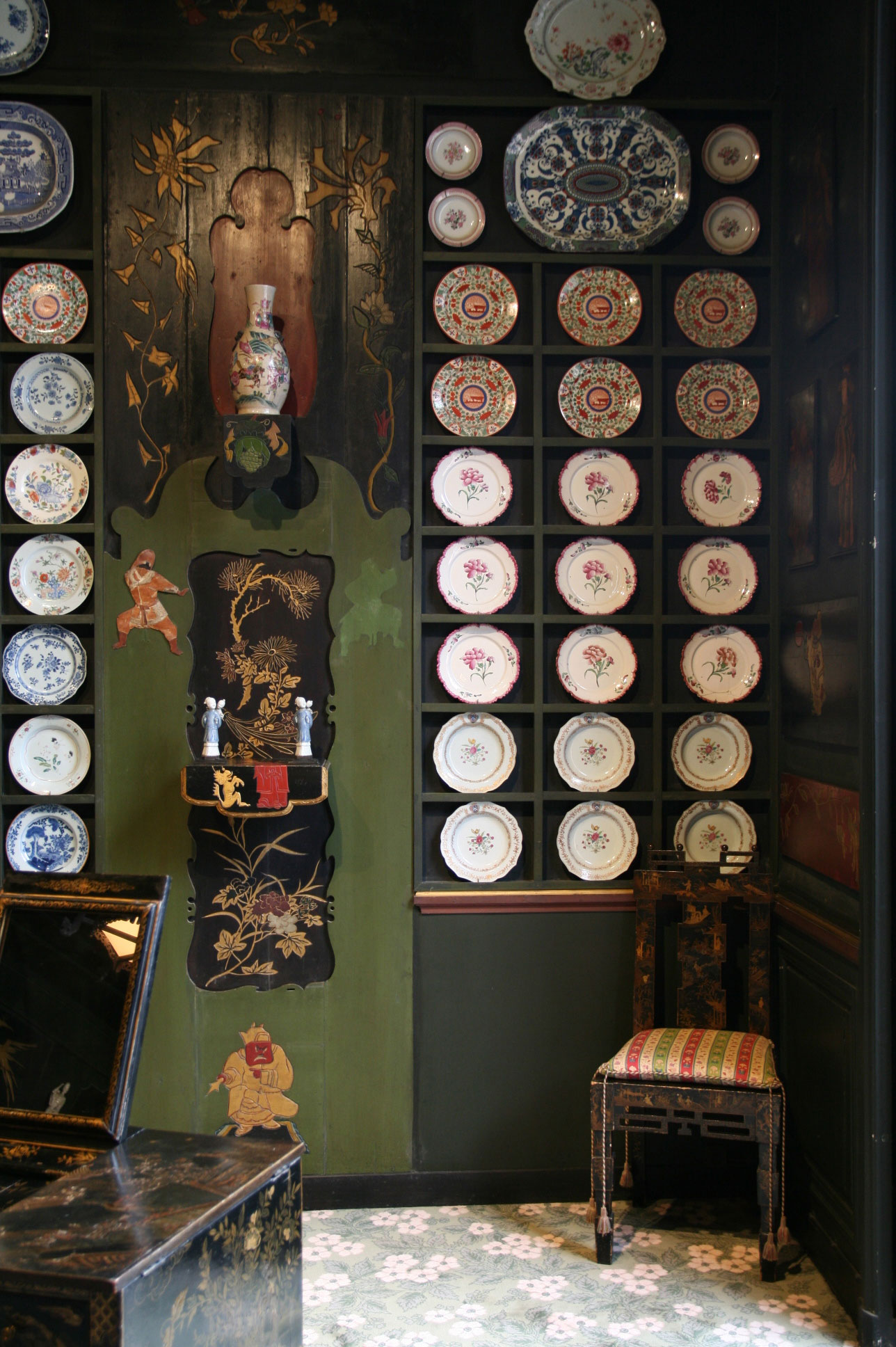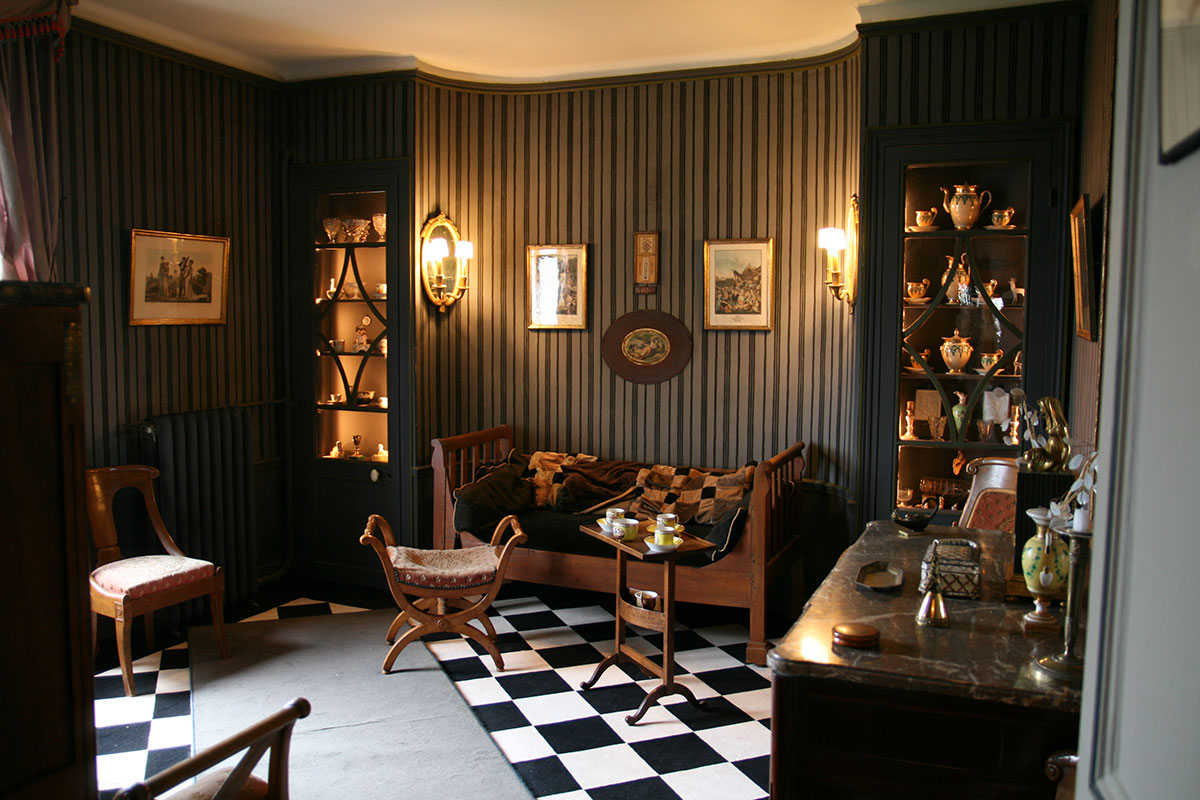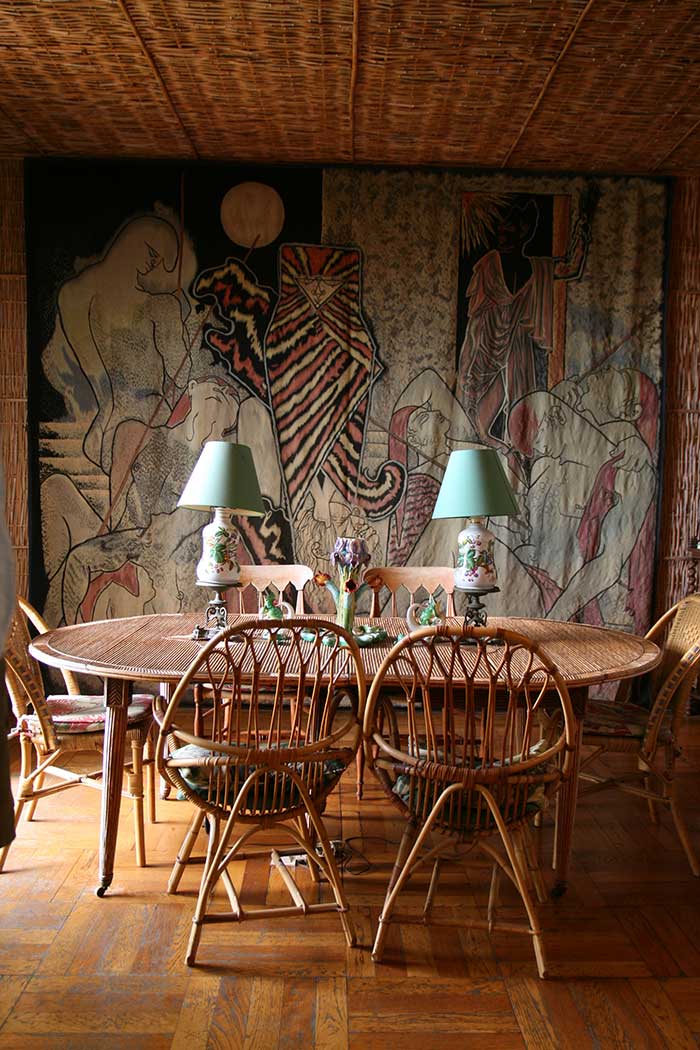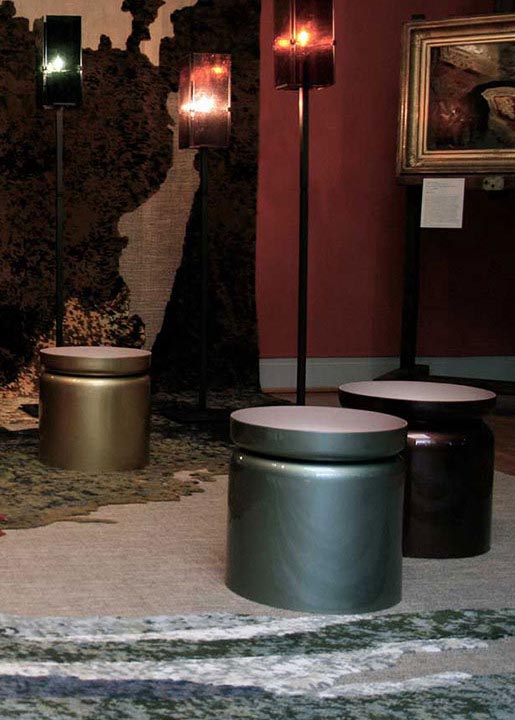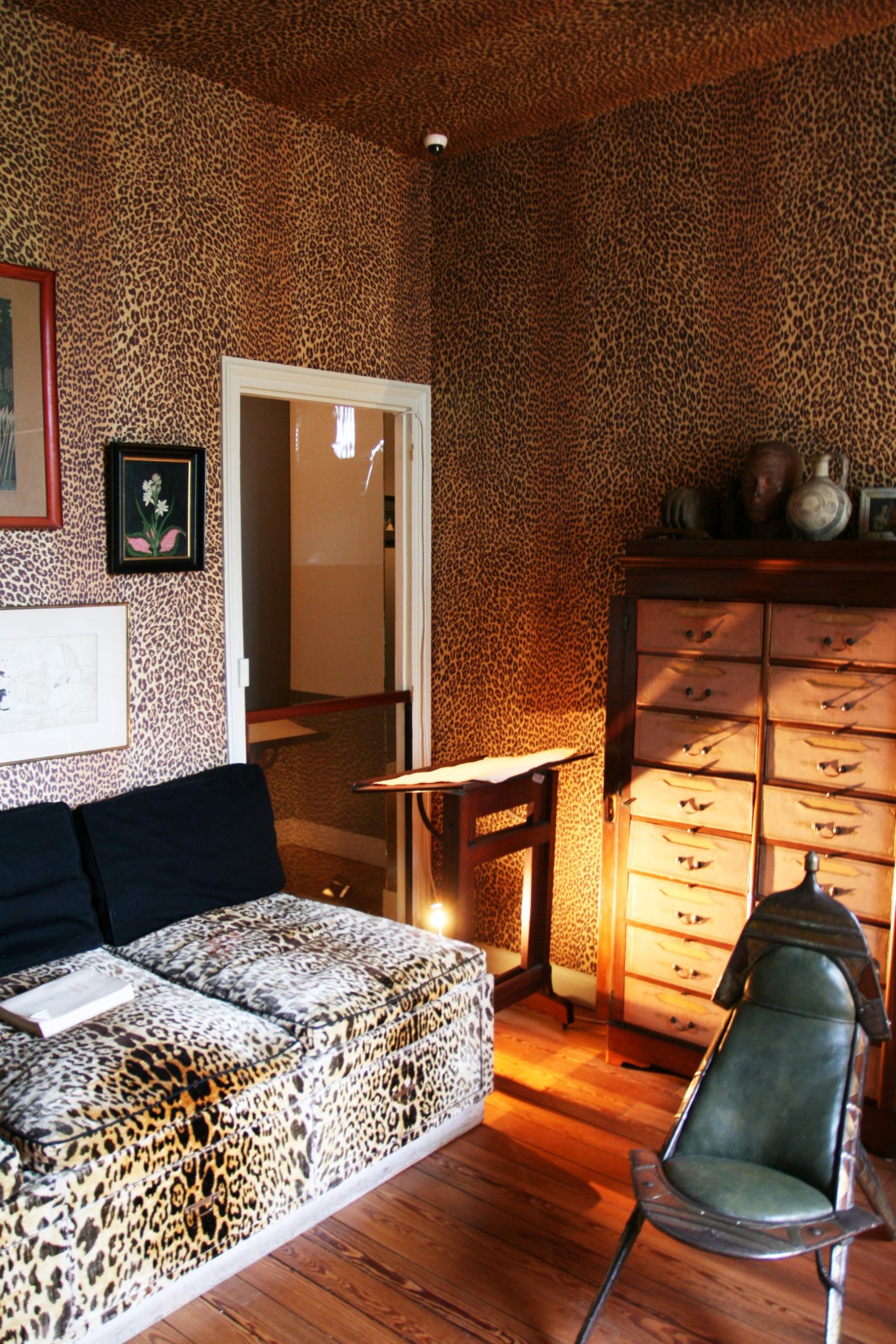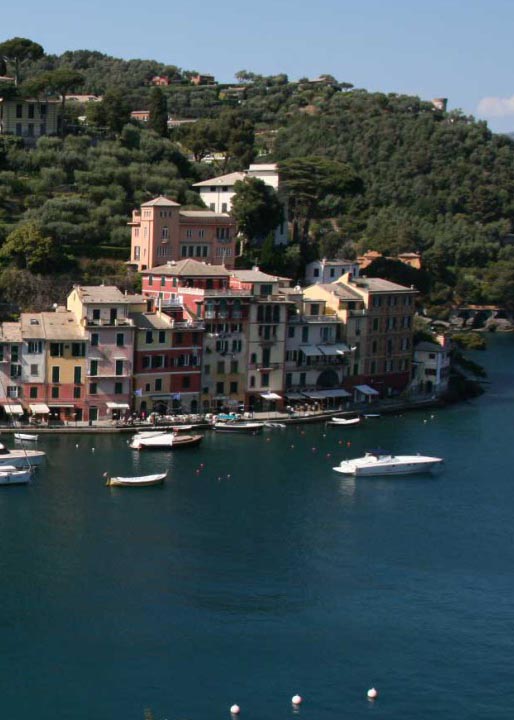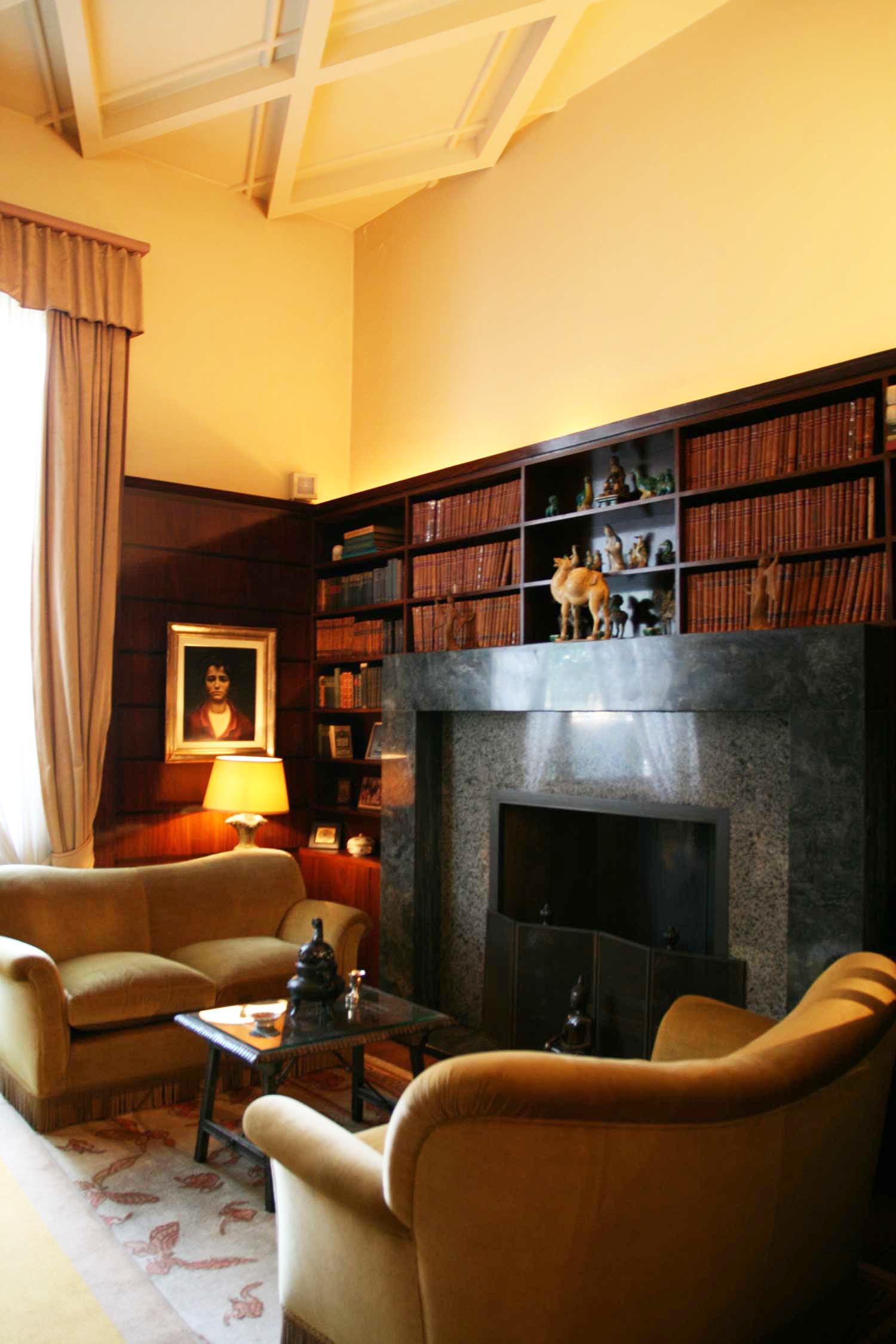THE ANGE VOLANT VILLA BY GIO PONTI
The Ange Volant was the first house designed by Gio Ponti outside Italy and the only house he ever designed in France. Ponti designed the house early in his career, in 1927, the year he opened his first practice.
Gio Ponti’s new approach to architecture – an approach which would fuse architecture, interior design and decoration – is exemplified in the Ange Volant. Here Ponti designed every single element – from the door handles to the gardens. As Olivier Gabet, the director of MAD Paris puts it « …only great artists have this humanistic approach, this capacity to juggle with poetry, painting, illustration, writing, even engineering…”
Located just outside Paris, the Ange Volant villa was designed for the Bouilhet family. Tony Bouilhet, heir to the Christofle silverware company, commissioned the house after having seen Ponti’s work at the decorative arts exhibition in Paris in 1925.
The house was originally to be called ” Villa la Saint-Cloudienne”. The name “L’Ange Volant” was conceived as a nod to the meeting and wedding of Tony Bouilhet and Gio Ponti’s niece, Carla Borletti, during the construction of the house. Gio Ponti described the event as an angel flying into the life of his friend, hence the name: “L’Ange Volant”.
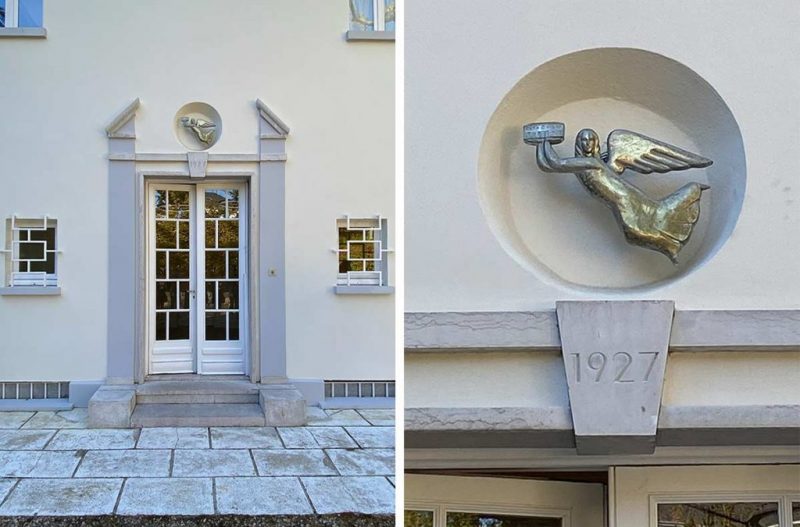
L’Ange Volant exemplifies Gio Ponti’s vision of the modern house : a space which looks both to the past and to the future, evoking simultaneously the sleek modern style of the 1920s and the codes of Palladian Renaissance villas.
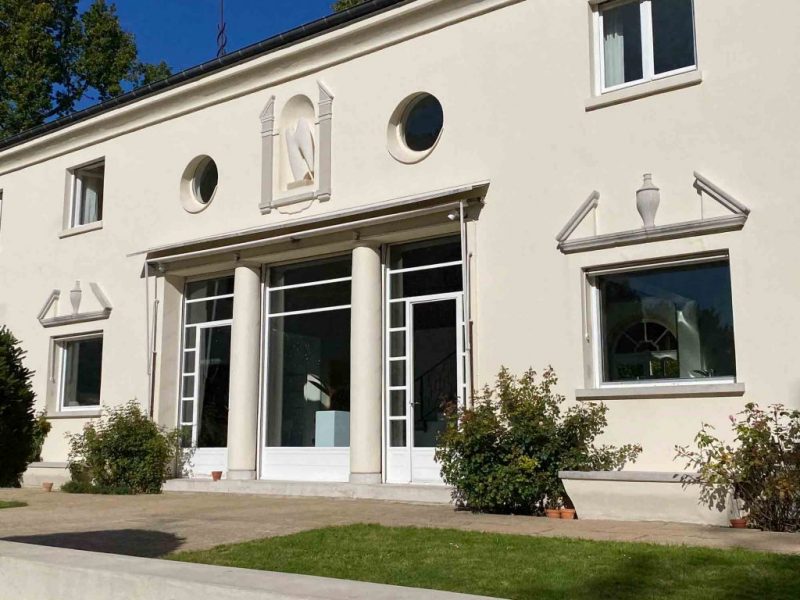
The light-filled house, simultaneously grand and welcoming, opening out to the garden – is the perfect example of Ponti’s theories of “la casa all’italiana”.
« The Italian-style house », explained Ponti, in the first issue of Domus magazine published in 1928, « has nothing of the padded refuge from the elements as it is conceived on the other side of the Alps…The Italian house is a place where to enjoy life, in happy possession of the beauties that our lands and skies give us. In the Italian house there is no great distinction between exterior and interior… in our country the architectural materials used outdoors – stone, plaster, fresco – are also found in interiors, with their vestibules and galleries, rooms and stairways punctuated with arches, niches, vaults and columns…”
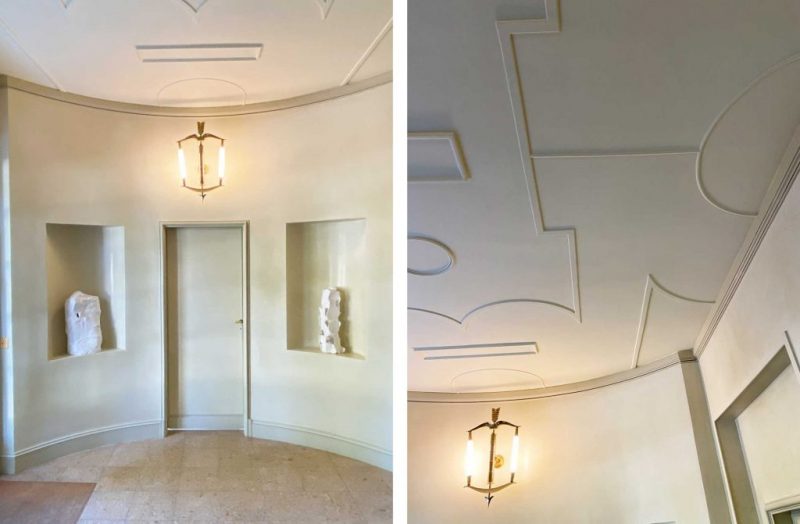
The Italian-style house must above all be confortable. By confort, Gio Ponti didn’t mean the fulfillment of basic requirements but “something superior… a measure for our own thoughts, a place in which to live a happy and confident life, to communicate with nature, a place to dream…”
“Interior design” stated Ponti, must be a “successione di spettacoli” (a series of shows). This is perfectly exemplified by the theatrical double height-living room, with its ceiling painted in the manner of Renaissance palaces, central staircase and balcony.
We visited on the occasion of Genius Loci, an event put together by Marion Vignal, who showcased a curated selection of art and design in the villa.
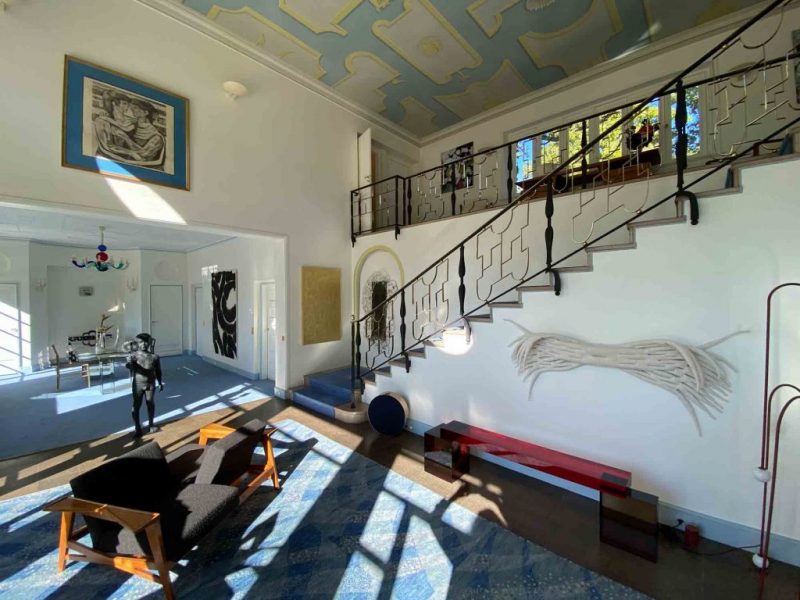
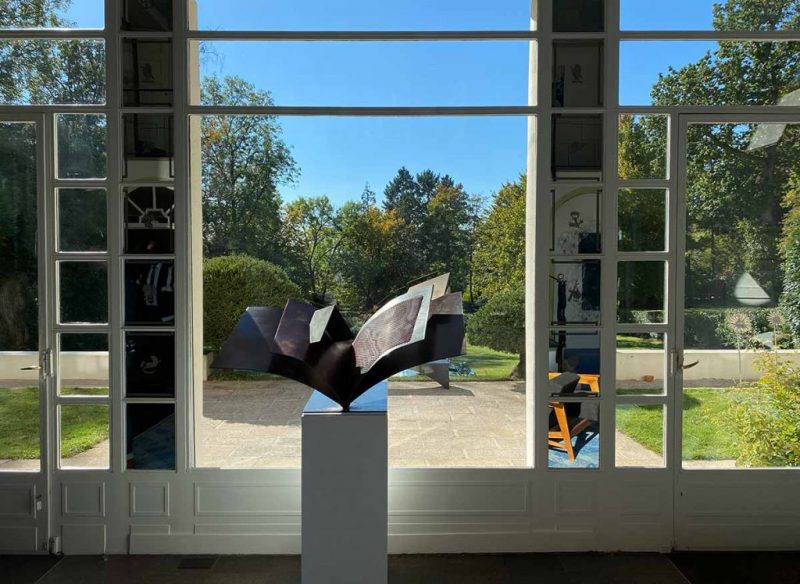
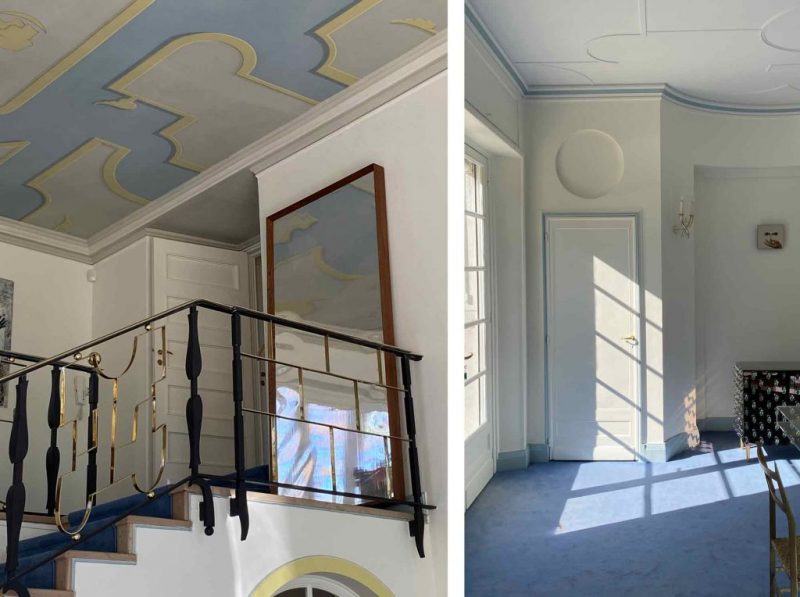
Bathed in warm light, the large living room contrasts with the more intimate fireplace area on one side and a dining area on the other.
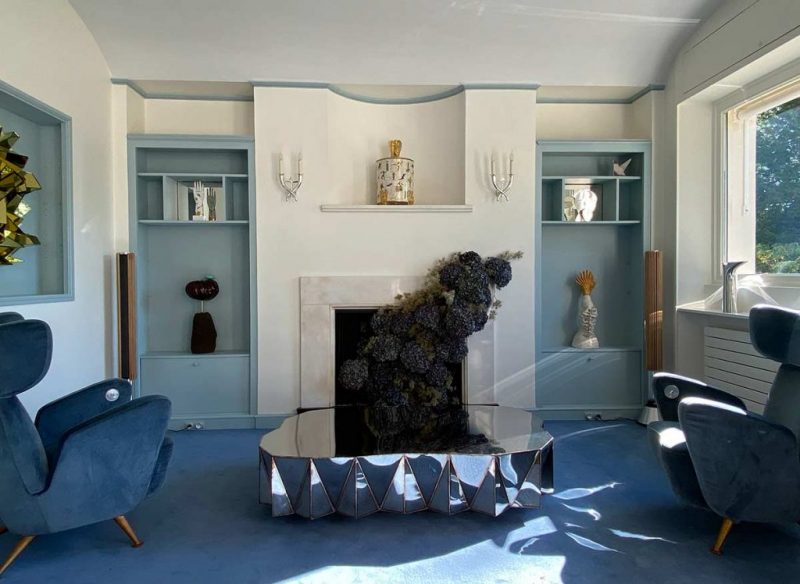
The mezzanine, with its balustrade made in the Christofle ateliers, leads to the bedrooms and bathrooms.
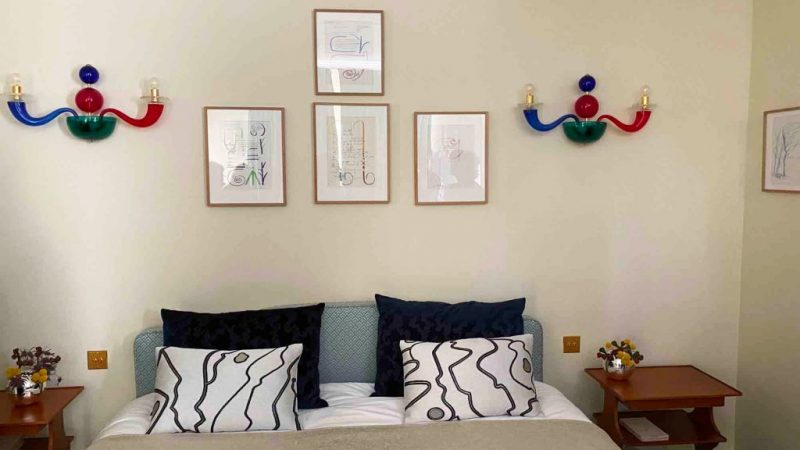

The garden, also designed by Gio Ponti, unfolds like a carpet of green in front of the Ange Volant.
